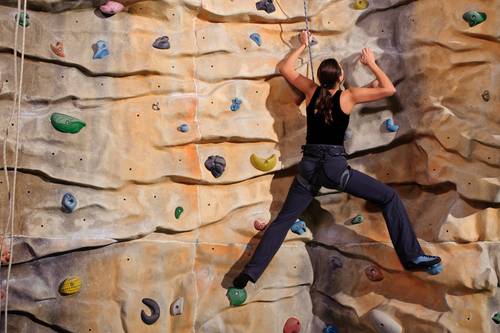Imagine you finish a day of hard training such as a steady-state effort or you focused on lactate threshold training and now you realize that tomorrow is going to be a day filled with both muscle stiffness and soreness. You already drank your recovery shake and spent some time on the foam roller before bed. But what should you do tomorrow if your training calls for a day off and you don’t want to be stuck inside?
This scenario is quite common and when asked by an athlete how to go about doing a recovery ride or a recovery run, a coach needs to offer more than, “Do this activity at this intensity for this long.” There needs to be a real understanding.
The Purpose of Recovery
Some say the only way to get faster or stronger is to create an adaption that the body has to overcome. This is why we all lift heavier weights, run faster, or bike longer. I agree and because of this adaption the body requires a down period of rest and recovery (a week or day of lower volume or low intensity).
The entire purpose of recovery is to allow the muscle to repair itself and to engage muscles that are tired or sore from a previous day or prior period of time (say, a few weeks of work). When we are recovering from a phase of training, we can have down weeks (less volume) or complete recovery days. Recovery during a down week is around a 30% reduction in the typical training volume of the week. This 30% is not set in stone for athletes, but is an example to show that you aren’t reducing your training load by 50% or more. That level of reduction is reserved for when you are tapering for event and we aren’t talking about that today.
As a coach, you must tread lightly on this topic as most athletes think they should do more or go harder when they start to feel sluggish or fatigued. Athletes have this problem where they don’t understand the concept no matter how much you talk to them about it. These athletes fail to realize the importance of recovery.
What to Do on Recovery Days
Taking a recovery day doesn’t mean you are to do absolutely nothing. The point of a recovery day is to recover from your training in not only the physical aspect, but also as a much-needed mental break. If you need an actual break from training, try catching up on your to-do list. Take your spouse or partner out for a date or meet with friends, but do something you aren’t normally doing. But with all this free time, you may still feel like you need to do something and to combat this we can include active recovery days.
How to Practice Active Recovery
 Active recovery focuses on completing a workout at a low intensity, but just high enough that it gets the blood moving and helps reduce residual fatigue in the muscle. On a recovery day, running at a low intensity for a short duration such as less than sixty minutes or riding for less than 75 minutes can help speed recovery. Besides running or riding, you can try out other activities for crosstraining. For endurance athletes looking to spice up their training, try out rock climbing, going for a walk in a park, cross-country skiing, or getting on the dreaded elliptical machine.
Active recovery focuses on completing a workout at a low intensity, but just high enough that it gets the blood moving and helps reduce residual fatigue in the muscle. On a recovery day, running at a low intensity for a short duration such as less than sixty minutes or riding for less than 75 minutes can help speed recovery. Besides running or riding, you can try out other activities for crosstraining. For endurance athletes looking to spice up their training, try out rock climbing, going for a walk in a park, cross-country skiing, or getting on the dreaded elliptical machine.
Examples:
- Cycling for under 75 minutes at zone 1 to zone 2 effort (power at <75% FTP) and heart rate on flat roads.
- Running for 30-45 minutes at zone 1 effort and heart rate on a soft flat surface such as a track.
For both of these workouts, be sure to keep them at a low intensity that will allow you to focus on breathing, form, and being within yourself in the moment. I find that recovery workouts with a focus like this can really put an athlete’s mind at ease and help reduce fatigue.
But What Do I Really Need To Know?
You need to know that although you can take a recovery day and do nothing, you might want to consider taking an active recovery day. If you are scheduled to complete a recovery ride as your training for the day, the best advice I can give you is to keep the intensity low, work on a flat surface (such as a trail or track), and keep it relaxing. Enjoy the ride or run and stay safe while staying active.
Your recovery can take all types of shapes or forms, but find what works best for you and stick to it. You never know what you might discover about yourself while accelerating your recovery.
Photos courtesy of Shutterstock.






